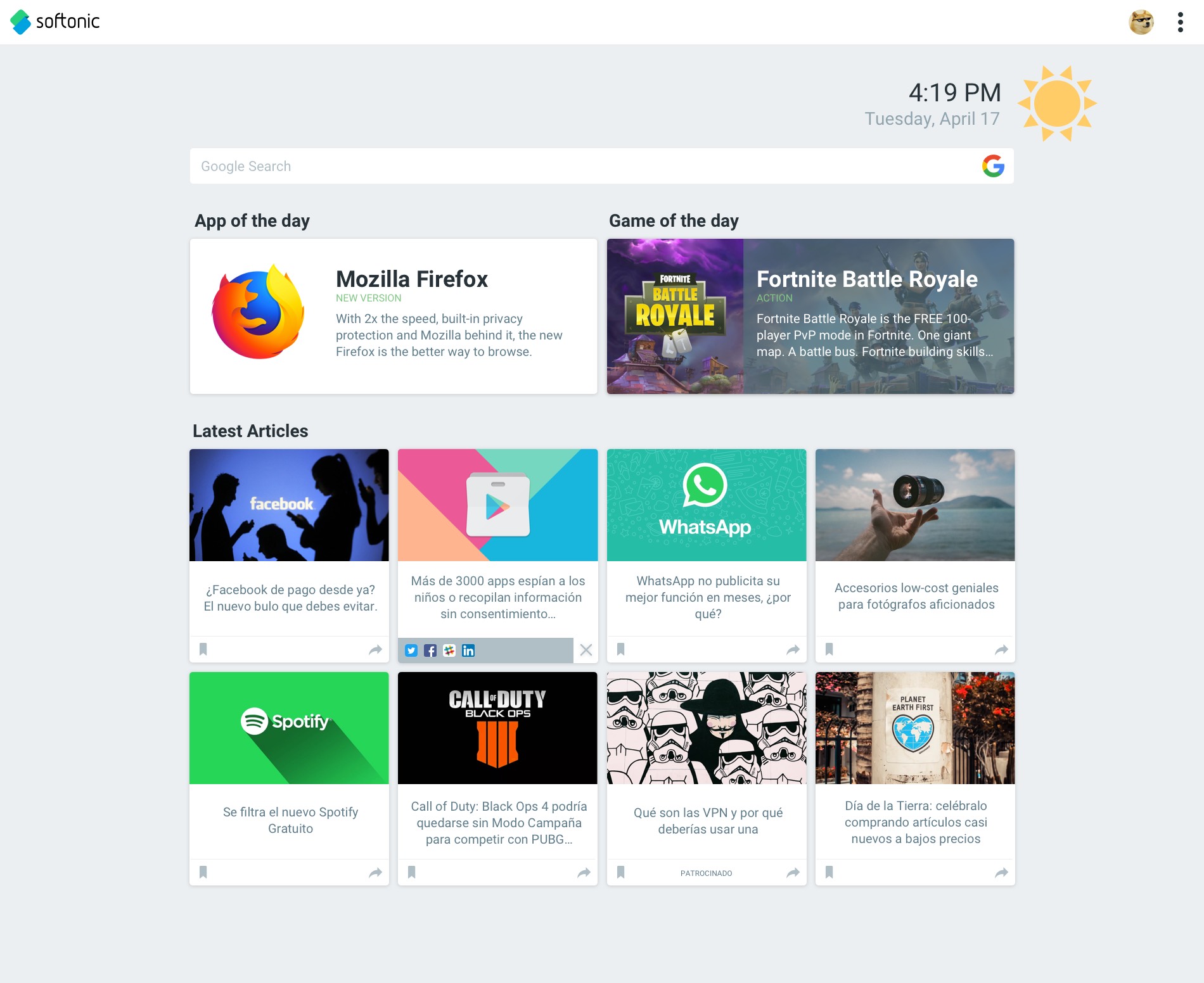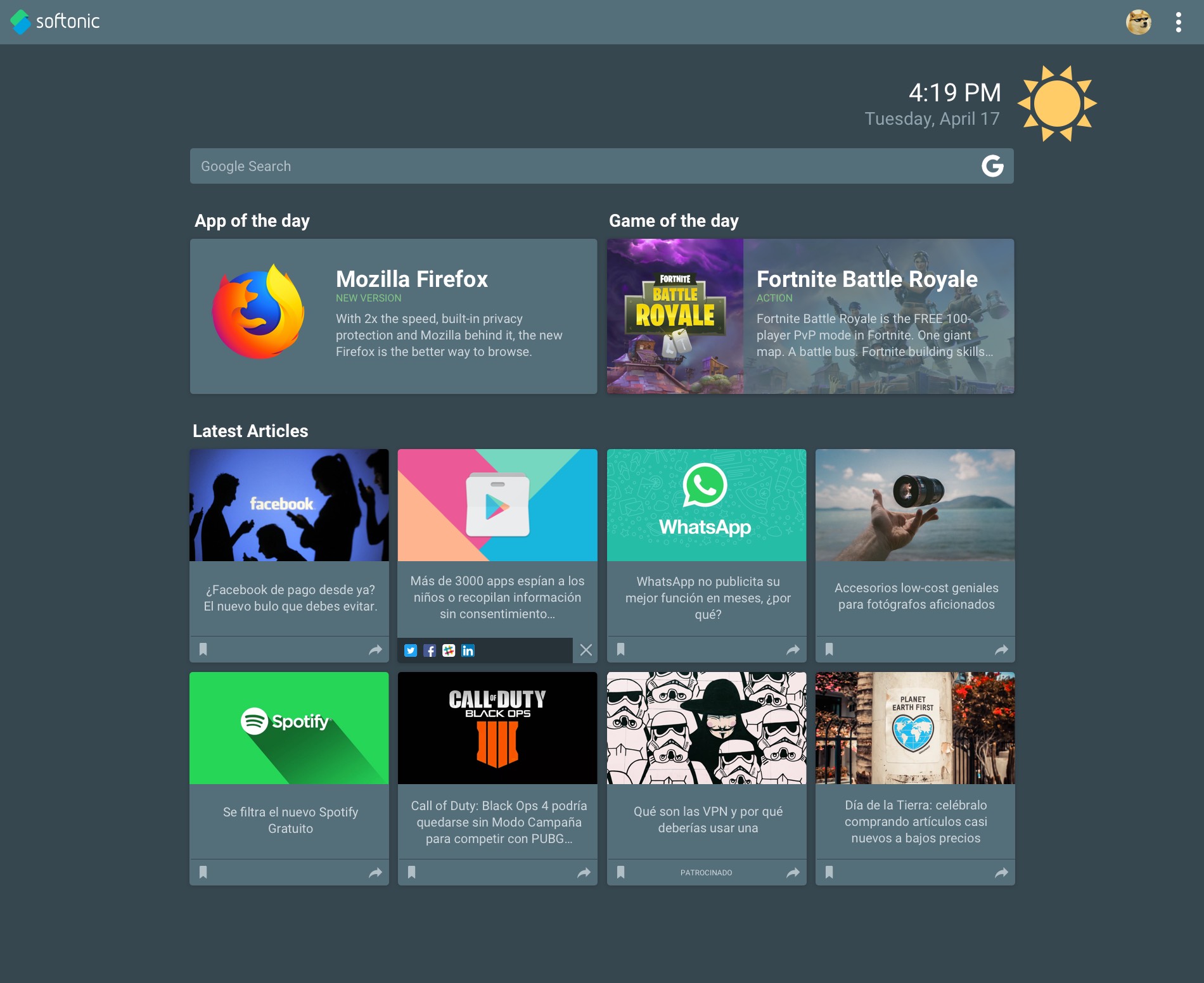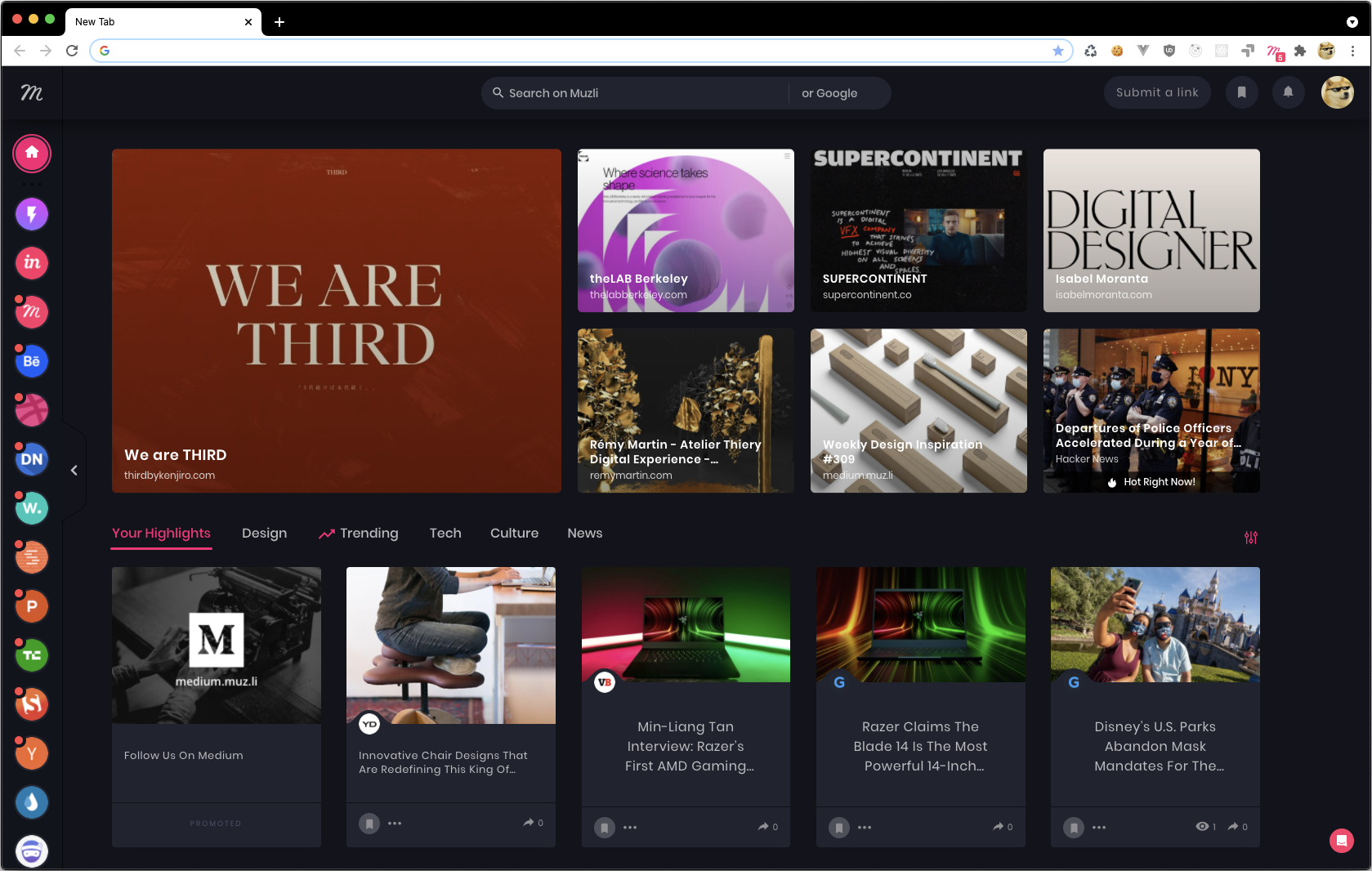Softonic - October 2018
Chrome Plugin Concept
One of the biggest revenue streams of Softonic is software distribution. Since it's inception the company had tried to create it's own software, but never managed to deliver something that was seen as an absolute success.
During 2018 the idea of creating new types of software started spreading again. We needed new channels to monetize, engage with our users and there was a rising interest to test our distribution channels with different value propositions.
My Role
Product Designer.
For this project I did market research, facilitated a series of brainstorms, created a value proposition, assessed development difficulty, built high fidelity prototypes and pitched the idea to different stakeholders.
Process and Outcomes
Before joining the Globex squad, I had been working with the content and editorial teams, to redesign the articles page, and improve user engagement. At that time I was also using Muzli on a daily basis, and after some brainstorming sessions with the team, observing the company’s needs that were arising, I came up with the idea to build a browser plugin that would deliver a similar experience, but with Softonic's content.
Muzli is a Chrome plugin that shows you the latest design news from the sources you select every time you open a new tab. To me it's of great use, as everytime I open a new tab I get reminded about new and interesting things, with a strong visual appeal.
I thought that if we could deliver a similar experience with Softonic's content, it would be a great opportunity to engage with our users, so I created two simple prototypes to showcase the idea. Both in light and dark themes:


At the moment, many members of the engineering team, specially some front-end developers, were interested in learning how to create Chrome plugins, we were allowed to dedicate 15% of our time into developing ideas that we liked, so it felt like the perfect chance to try this type of project.
Sadly, the idea was dismissed as the installation funnel of a chrome plugin is different from a regular binary (which was the preferred type of installation to test), and most of the available human resources had to be put to more critical ends.
Conclusions and Learnings
This project was really fun to do and I wish it would have, at least, been tested, as the development cost was low and the potential for gathering user data and improving user engagement was significant. But, in the end, all product development is tied to business needs and we couldn’t find the space to bring it to fruition.
